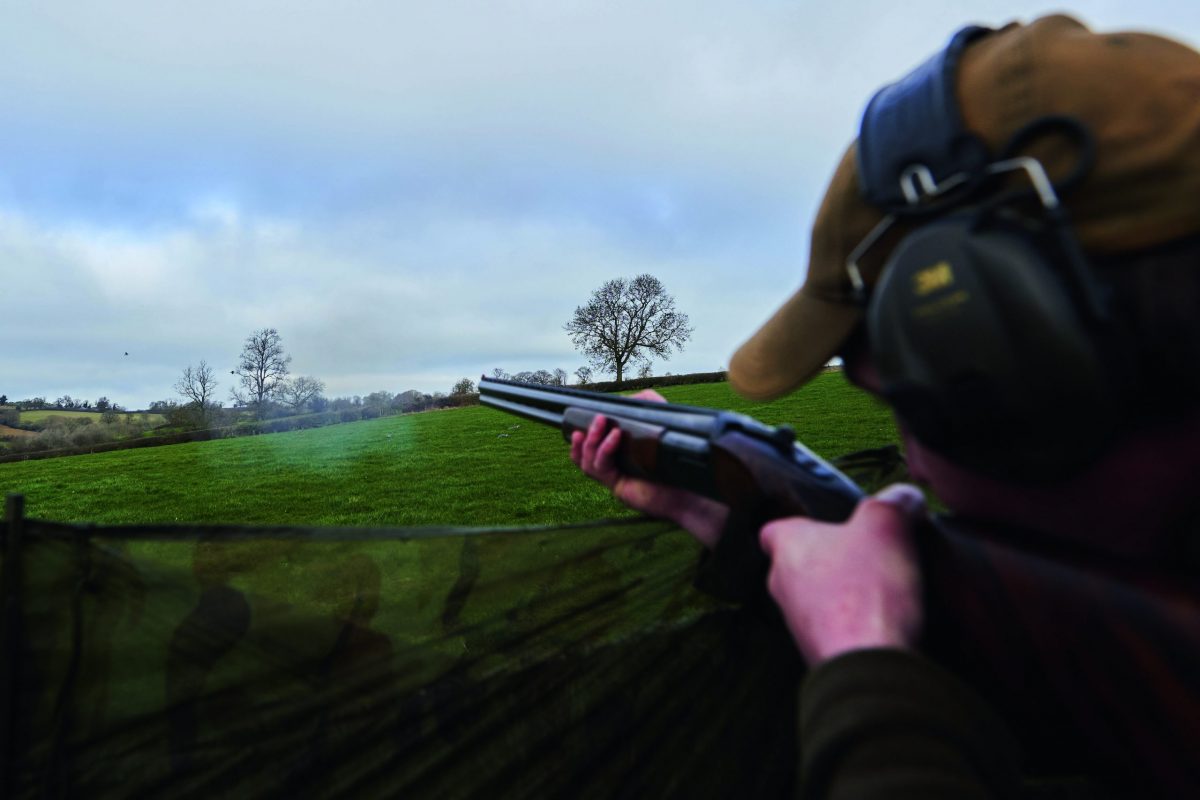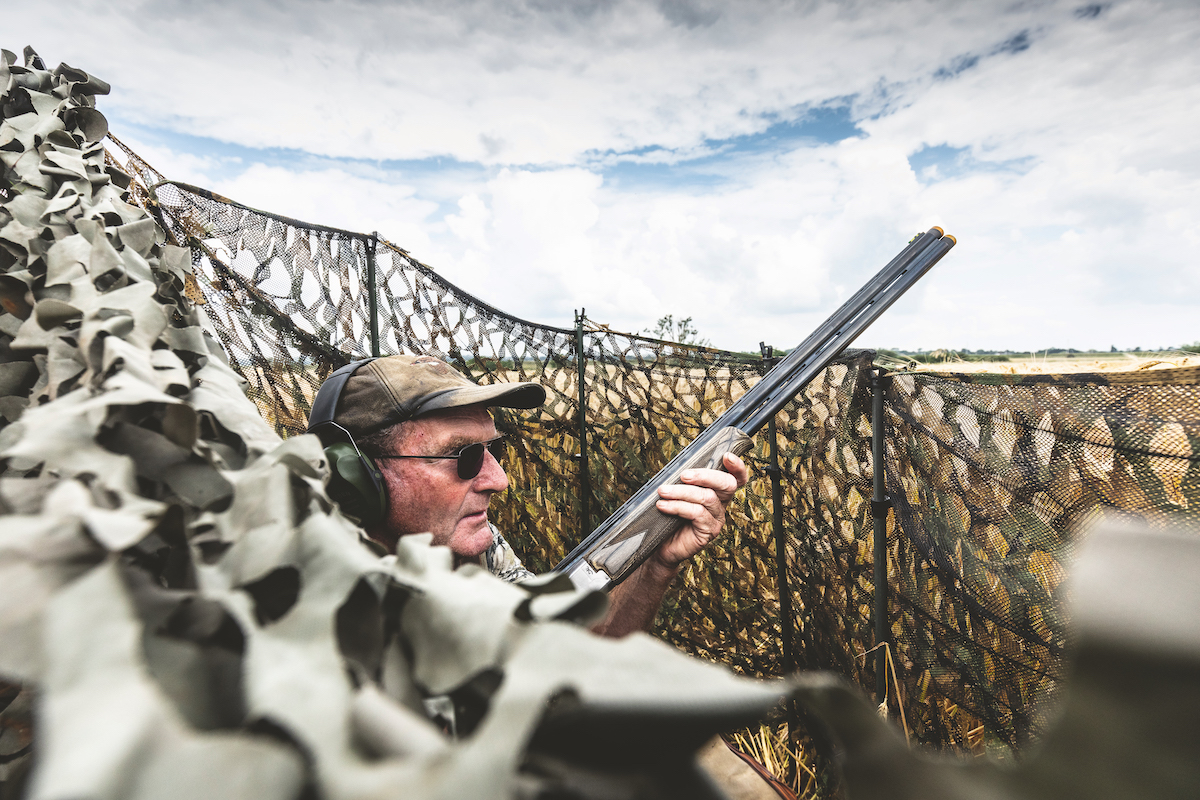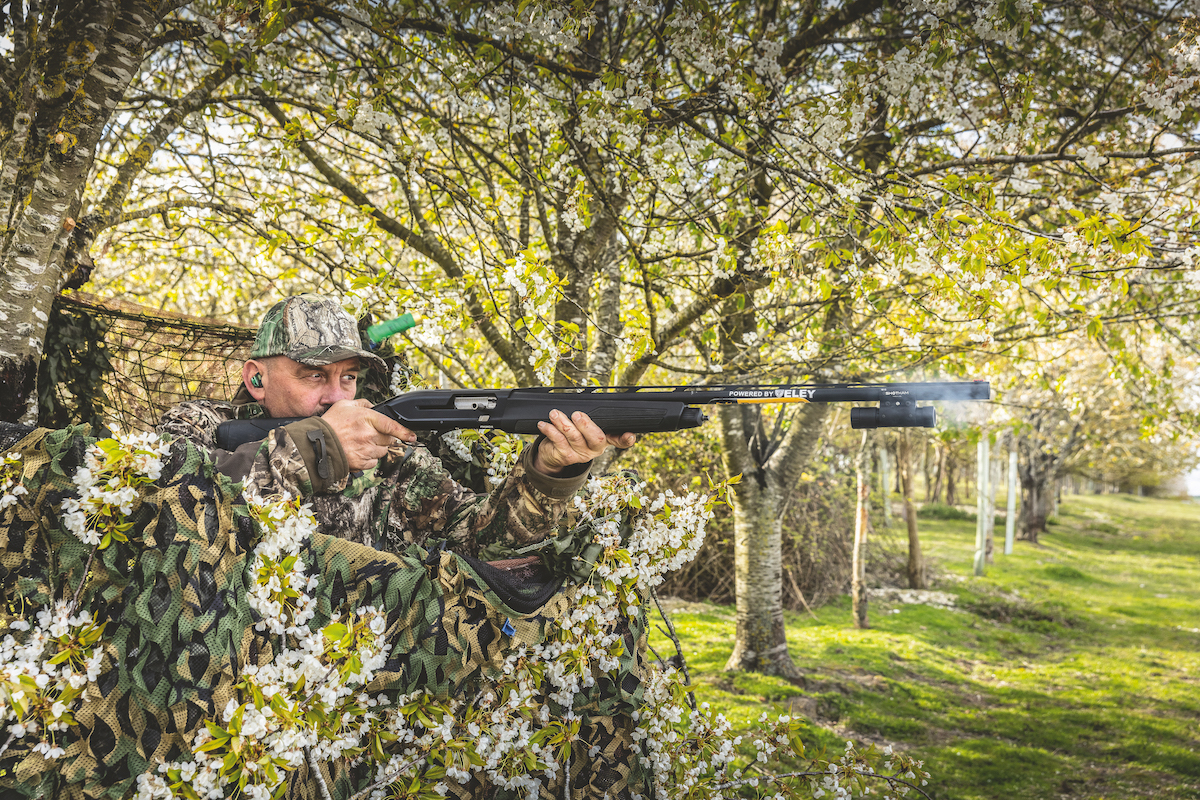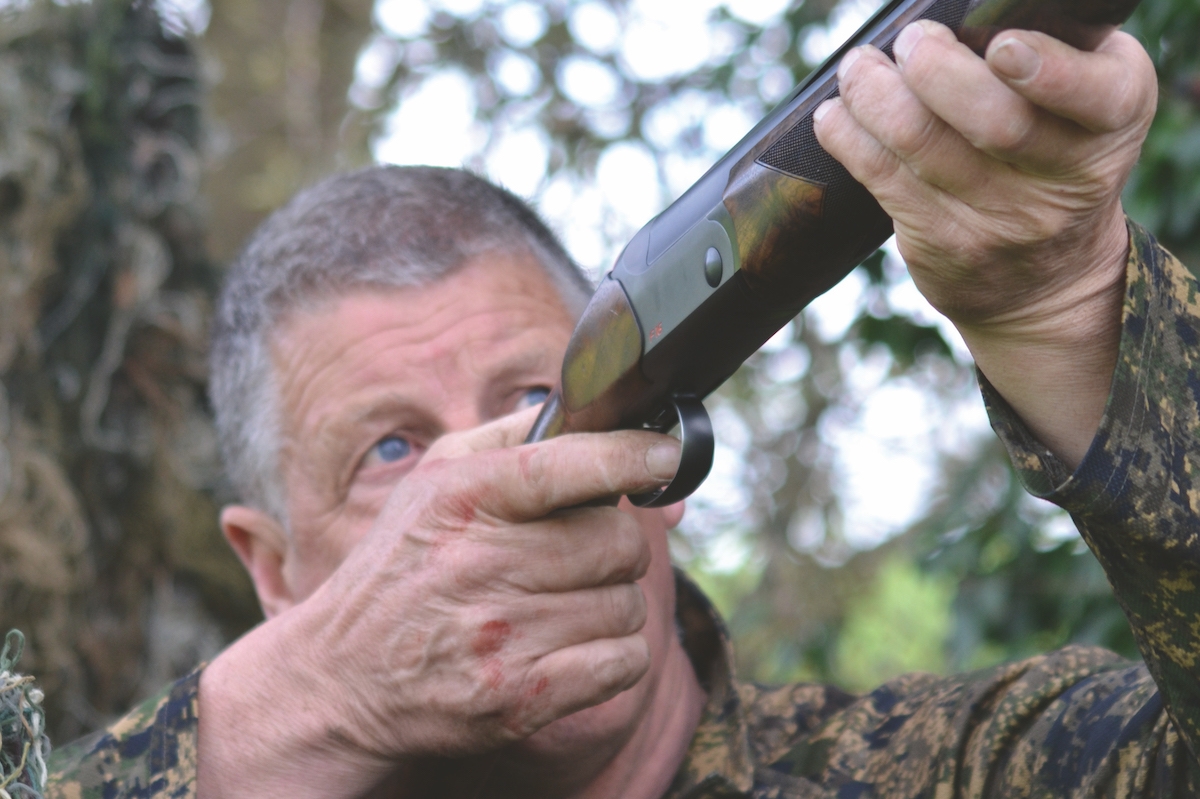Spring pigeon shooting – how is pigeon behaviour affected?
Tom Payne is kept guessing as the early spring conditions affect the pigeons’ behaviour, but he still manages a good session in the hide

Tom Payne drops a passing pigeon, tallying up a total of 31 birds
Spring is around the corner — I’m sitting here writing this looking at snowdrops, and daffodils are beginning to make an appearance in the garden. What I’ve actually been concentrating on in the garden, though, is not pretty flowers — I’ve been watching how much the clover has started to move.
The early to middle part of February became very spring-like. As I drove around on my reconnaissance trips enjoying the sunshine, I was surprised to see quite a number of farmers out drilling barley. It was only 5 February, which is very early to drill.
The problem is that early drill very rarely shoots properly in the winter months. This is normally because pigeons are still in winter crop mode, hammering oilseed rape. However, there are areas now that have little or no rape at all, and so an early drill in certain places does sometimes hold a few birds. On the whole, though, those early drillings are ignored by the pigeons.
In an ideal world, you need warm afternoons with a light breeze for shooting drillings. Those warm spring afternoons with intermittent rain showers always lead me to a specific situation, and it’s one of my favourites to shoot: grazed or freshly grazed clover.
You know when pigeons switch on to it for a couple of days because you see birds feeding on rugby pitches, verges, roundabouts — basically any low-cut grass. They can switch on and off it very quickly, and the weather is important. A bit of light rain followed by warm weather or broken clouds and a warm sun with a light wind are perfect clover conditions.
It was a Sunday afternoon and I was trying to make a plan for shooting on the Monday. It was a warm afternoon so I went for a drive, and that was when I began seeing farmers getting ready to start drilling. Monday was due to have similar conditions, but this early into February I was confident the birds would stay on green crops, mainly oilseed rape, even with the unseasonably warm weather.

Plastic decoys stand out well against greenery on an overcast day
But as I drove around I couldn’t find birds anywhere, although I did spot the odd one or two on bits of grass here and there. Had I travelled miles, knowing in my gut where they could be?
At about 3pm I decided to trust my instinct and go to check out one of my favourite spots. I thought it would be far too early for this particular farm but maybe, just maybe, it would come up trumps.
Unbelievable
I drove up the farm track, looking over the fields to my right. I pulled up and saw an ash tree full of pigeons. I couldn’t believe it, and I suddenly realised the whole field was blue with pigeons shoulder to shoulder. It had been a while since I’d seen birds like that. I wish I had trusted my gut in the morning but it was still only February, so I had not been expecting this.
The next day was on, and I was very excited. Not only is shooting over clover a very rare thing these days but it is such a joyous experience; the most relaxed pigeon shooting you will ever have the pleasure of partaking in. It’s like shooting over a lovely carpet. Everything is easy. It’s a ‘slippers on, in the hide’ situation.

Tom watches the pigeons before deciding where to pitch up for the day
I spent all evening studying the weather forecast, hoping we would have the same conditions I saw during my recon, but I was not to be so lucky. I woke up to an overcast and much colder day with heavy pressure; a typical February day. My enthusiasm drained as I knew these were possibly the worst conditions to shoot over clover. Pigeons would be tree-bound, back on oilseed rape and travelling as a flock to feed — normal winter behaviour.
Decoys
I set up under the ash tree that had been full the day before. I pulled myself away from the canopy to make sure I could maximise my angles for shooting. I decided to use plastic decoys only, because my dead birds had really darkened and filled in colour, and on an overcast day you need a brighter decoy to stand out on the green. It’s one of the reasons the sun is so important; on certain crops you need sun to help decoys stand out.
I was fully aware that this wasn’t going to be the day it could have been, but I was still quietly confident that I would scratch a bag.
You may be wondering about the importance of protecting the clover. This patch is a dairy farm, and clover has been undersown in the grass as it’s very important for the dairy cows’ grazing. So even though the fields are for livestock, it’s still important to protect their food source, which in turn goes on to help produce milk.

Despite the less-than-ideal conditions, Tom sets up beneath a tree, by an old hedge
Encouraging
I took my seat in the hide and it didn’t take long for the first bird to float over the hedge. Using my 30in Perazzi barrels I gently stood up and, with a pith of feathers over the dark grass, we were away and running. The number of birds that the shot moved further up the valley was very encouraging.
It went quiet for a bit — very quiet — and I prayed for a bit of sun to break through. Suddenly a bird floated up, very low across the field, from a stand of trees in the valley bottom. It could have put its breaks on at any time so I chose to shoot it fairly early, but I didn’t realise there was a bird following. This bird broke hard left over the hedge and I managed to react fairly quickly with my barrels.

Pigeons and crows can be seen in large numbers on the horizon, a promising sign for the day ahead
Another wait followed, about 20 minutes. Then from the village to my right a lone bird, tempted by the ash tree, decided against the safety of the tree and floated into the decoys. He joined his friends.
I needed the sun. I could see blue desperately trying to get through the clouds and finally there was a sunny window. The birds switched on straight away. It was nothing like it could have been, but a lot better than cold, dark and wintry conditions earlier.
Every now and then two or three pigeons lifted over the hedge. The shooting was interesting but I wouldn’t say I was being fully tested. I had to make sure I didn’t misread the birds over the ground. Like with grouse, when shooting over an undulating field it’s the contours of the ground that can beat you and not the bird.
Inquisitive
As the sun faded and the cloud took over, all movement began to slow and I could see birds going back to the trees further up the valley. I managed a handful more but these were not decoying birds, just a few inquisitive strays heading towards the ash I was near to have a look, with no real intent on feeding.
I decided to draw stumps, finishing on 31 pigeons for probably not many more cartridges, but it was fairly straight-forward shooting. In situations such as these, it’s the concentration you have to keep up, especially when you know what could have been. You need to take the day for what it is and ignore any frustration.
It was encouraging to see so many birds on this farm, and when the conditions are right I’ll be back to protect the dairy cows’ favourite.

Although the session didn’t pan out as hoped, Tom is encouraged by the number of birds seen the day before and will be back








